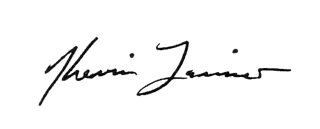Building Worlds With Words
In the spring I had the pleasure of reconnecting with someone I last saw in 2016, when I spent a week in Reykjavík to attend the Iceland Writers Retreat and give a talk at the University of Iceland. That trip came at the invitation of Eliza Reid, cofounder of the retreat—and now First Lady of Iceland, having rather unexpectedly assumed the position when her husband, Guðni Jóhannesson, won the presidential election shortly after I returned home to New York City. Reid was in Manhattan in May to take part in Taste of Iceland, an annual event celebrating Icelandic culture, and to promote her book, Secrets of the Sprakkar: Iceland’s Extraordinary Women and How They Are Changing the World. During a presentation at Scandinavia House, Reid spoke about Iceland’s place atop the rankings of countries closing the gap in equality, according to the World Economic Forum’s Global Gender Gap Report. It was a fascinating talk, but it was her remark about Iceland’s creation of words for the national lexicon, including “tölva (a mixture of ‘number’ and ‘prophetess’) for computer, friðpjófur (‘thief of peace’) for a pager, and skriðdreki (‘crawling dragon’) for an armored tank,” that brought to mind a number of topics explored in this issue.
That wordplay (thief of peace!) is reminiscent of the kind fostered by Matt Bell’s Worldbuilding Initiative at Arizona State University, as described by Adrienne Raphel, through which participants are asked to consider how languages differ and are encouraged to invent new words, “to come up with terms using what Ursula K. Le Guin called box-words: neologisms that act as tiny riddles for the reader to crack open.” In our special section on agents, Kate McKean solves a different kind of riddle: the book pitch, which is a bit like coming up with new words for the new worlds you’ve written, like drawing a tiny map of undiscovered lands. Contributors Esmé Weijun Wang and Jimin Han are cartographers of more familiar terrain, charting the contours of one’s writing practice and the editorial process as experienced by a novelist. And elsewhere in the issue, Brian Gresko profiles Kate Zambreno, author of The Light Room: On Art and Care. “Within the smallest life there’s a vast cosmos of experiences,” Gresko writes, “and Zambreno’s project...seems in part to be recording and celebrating those quiet moments, like the blossoms on a cherry tree, beautiful but ephemeral, or a child sounding out her first word.” This summer, as you set out to plan, build, map, and inhabit new worlds using words new and old, may this issue serve as a useful guide.








